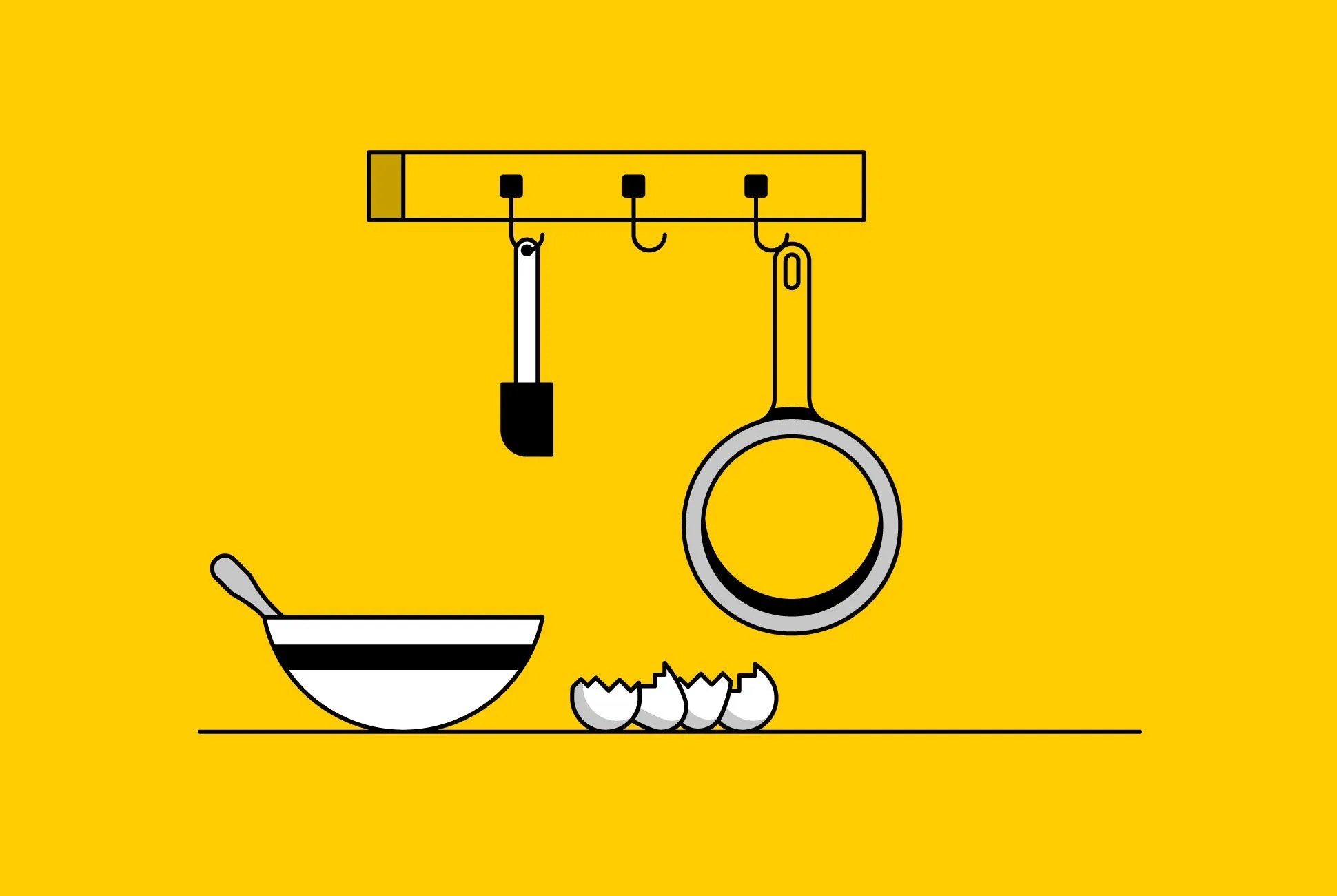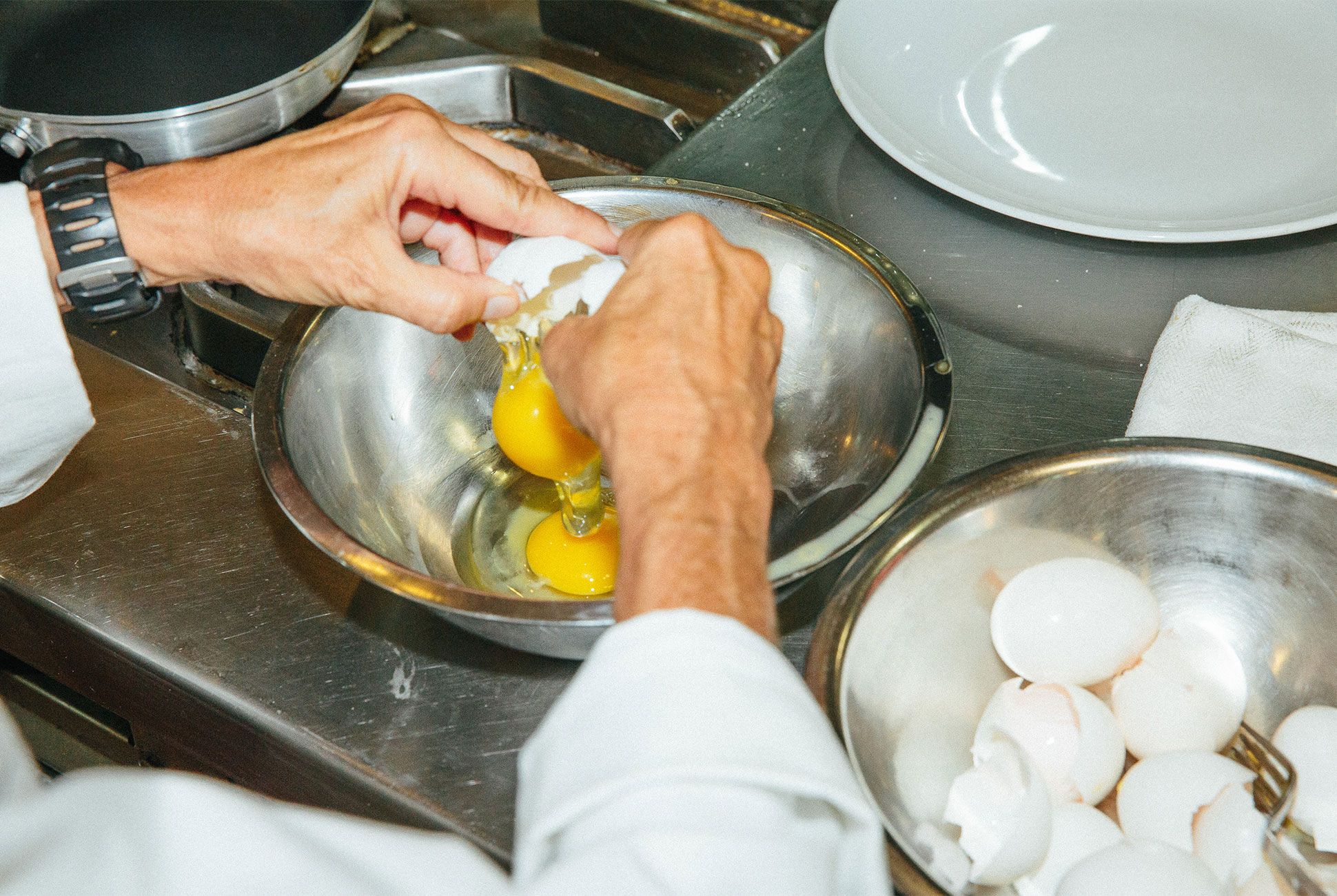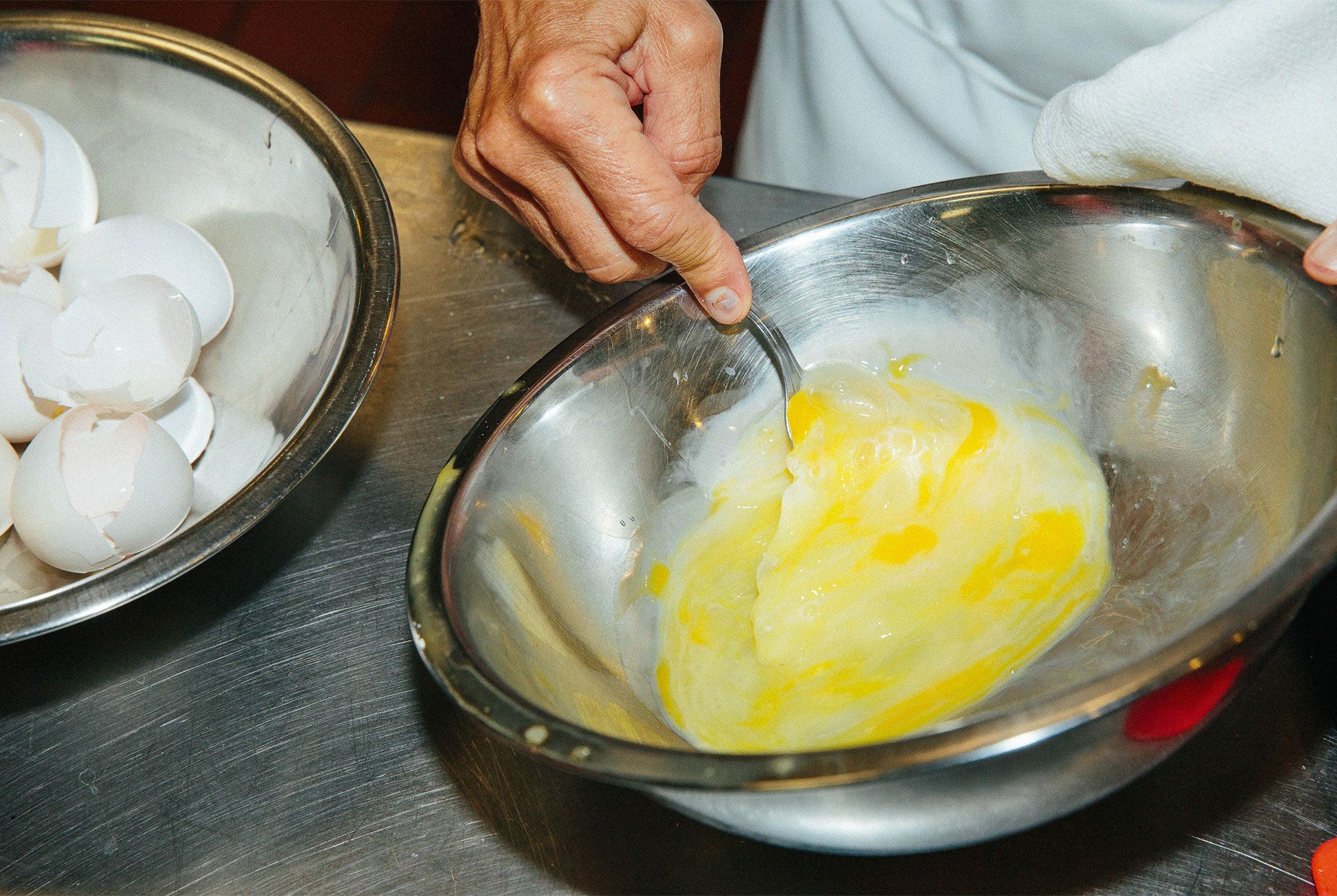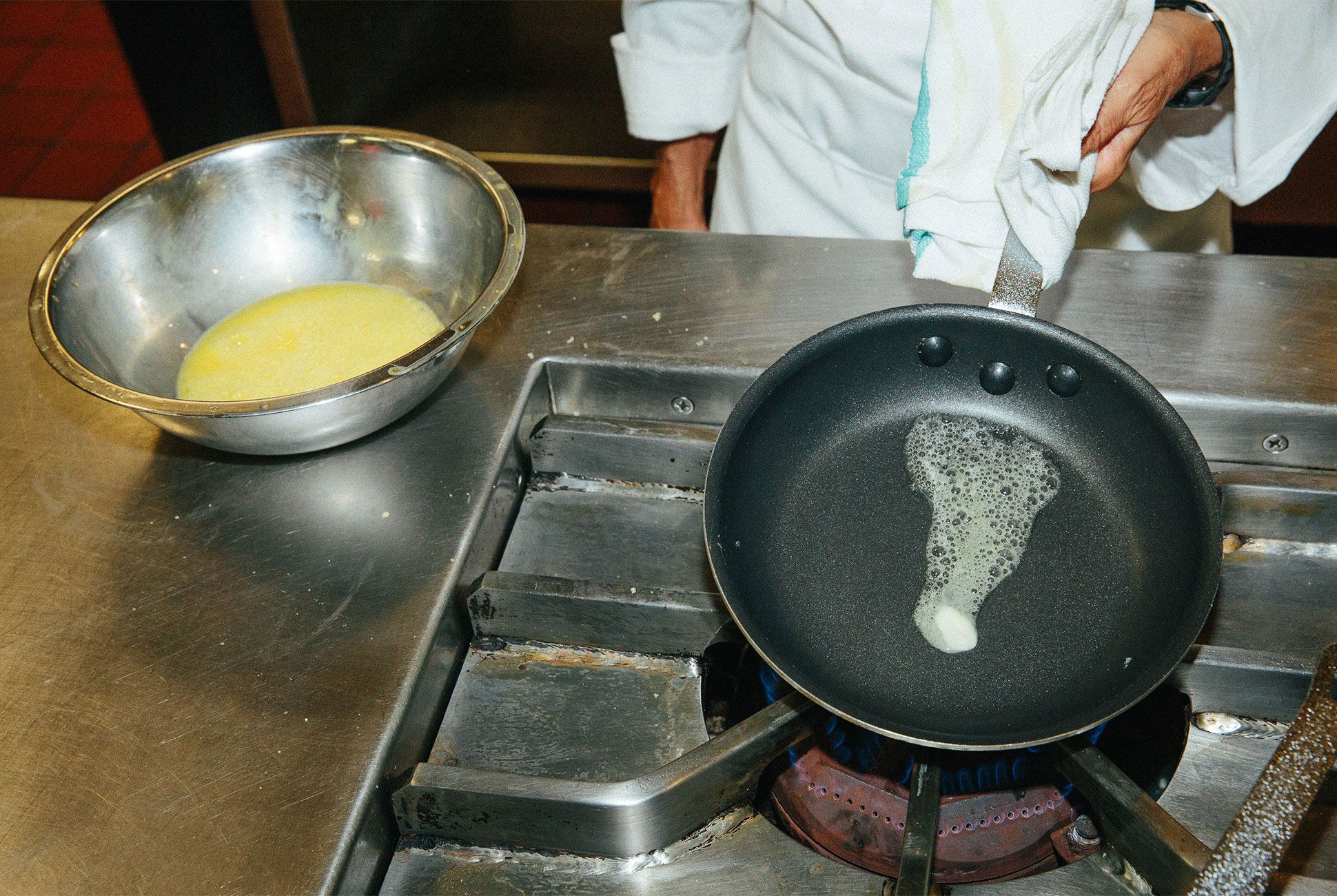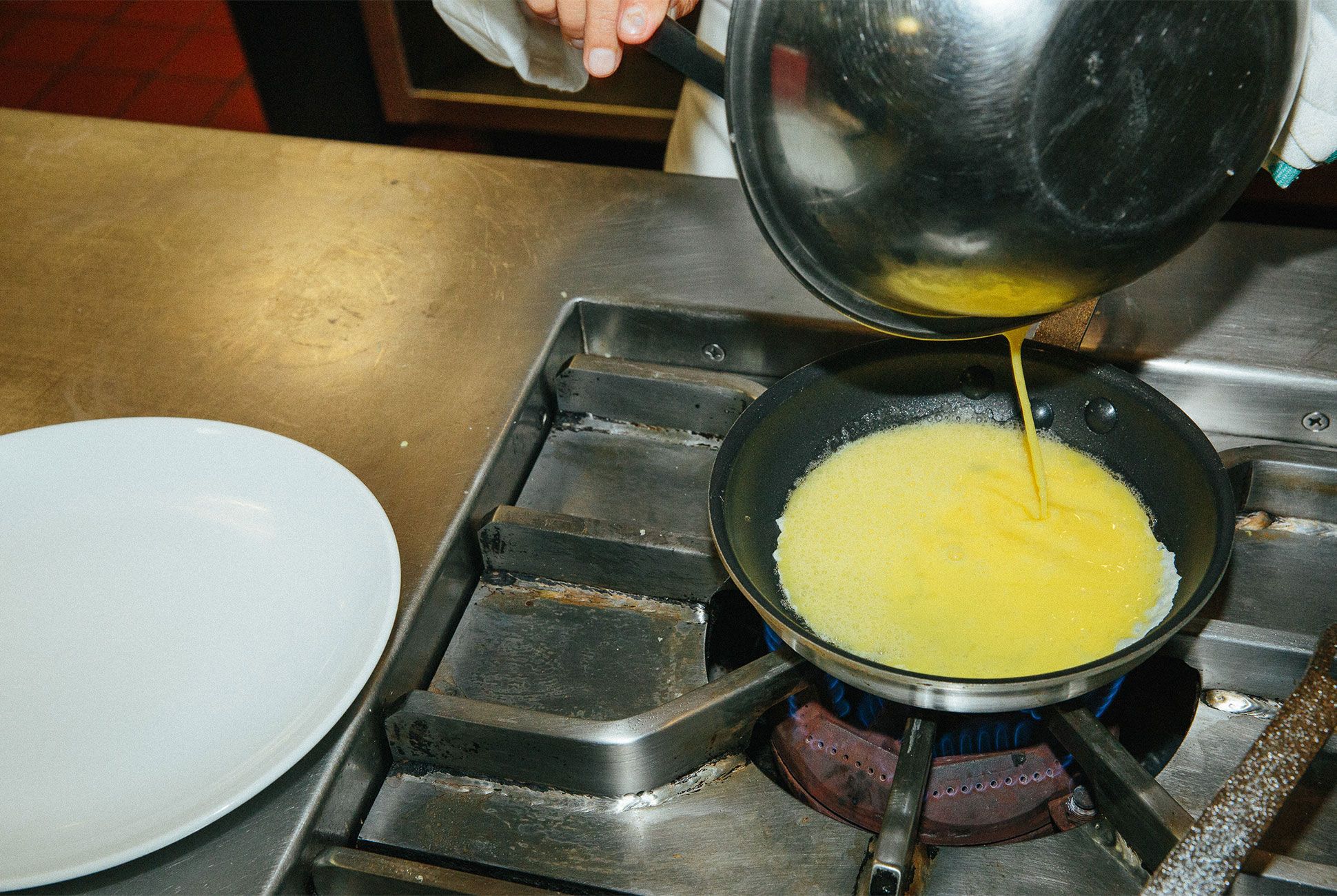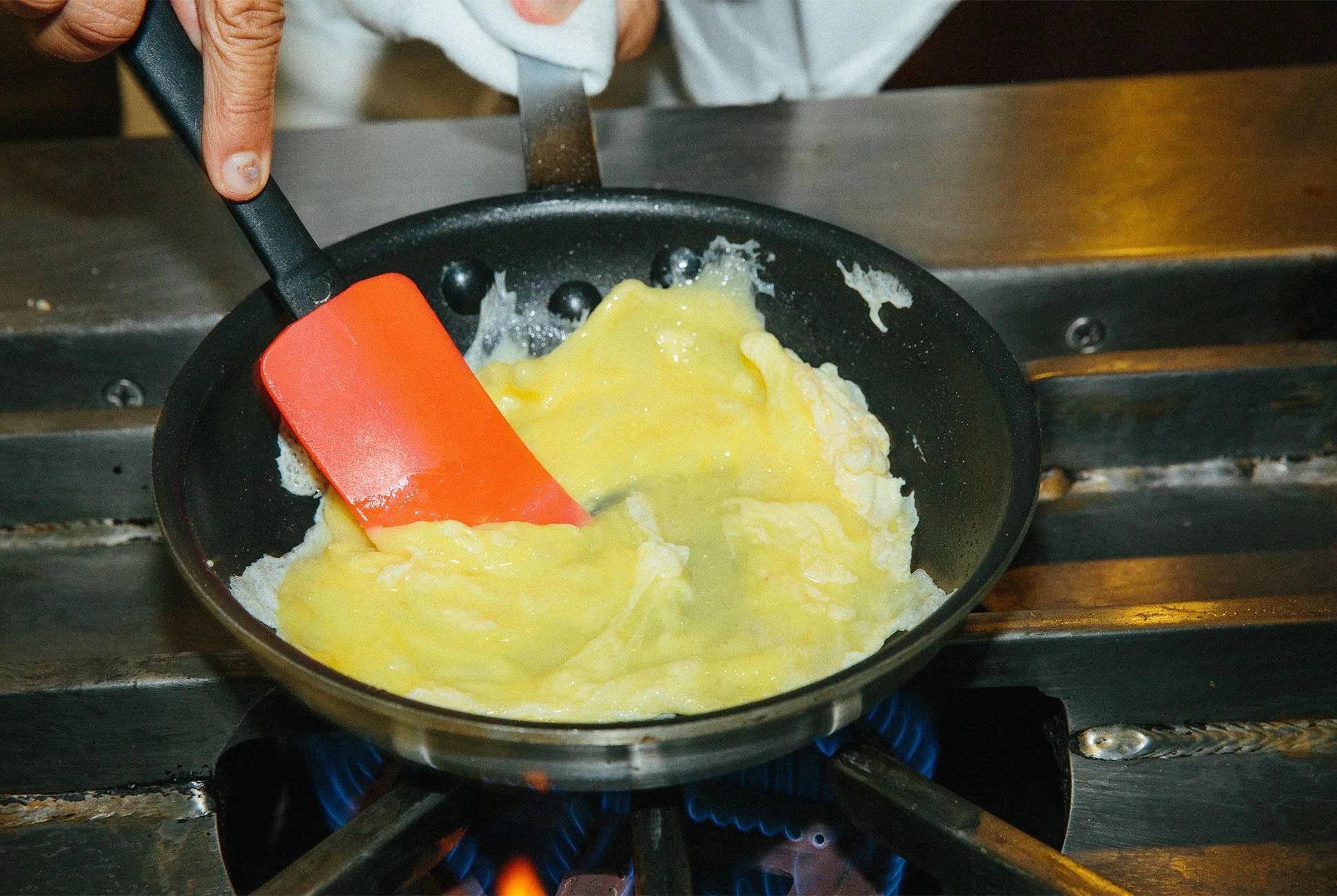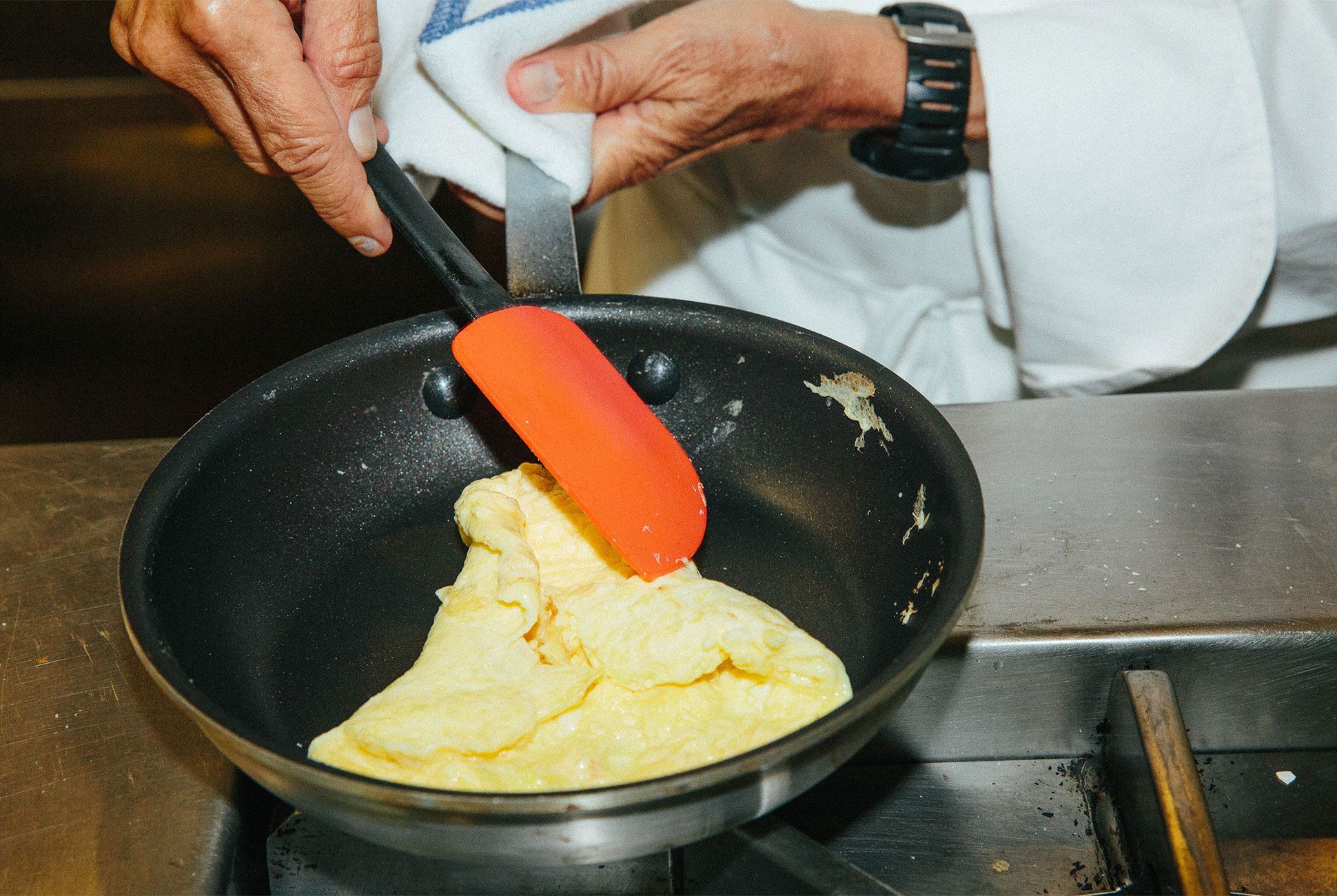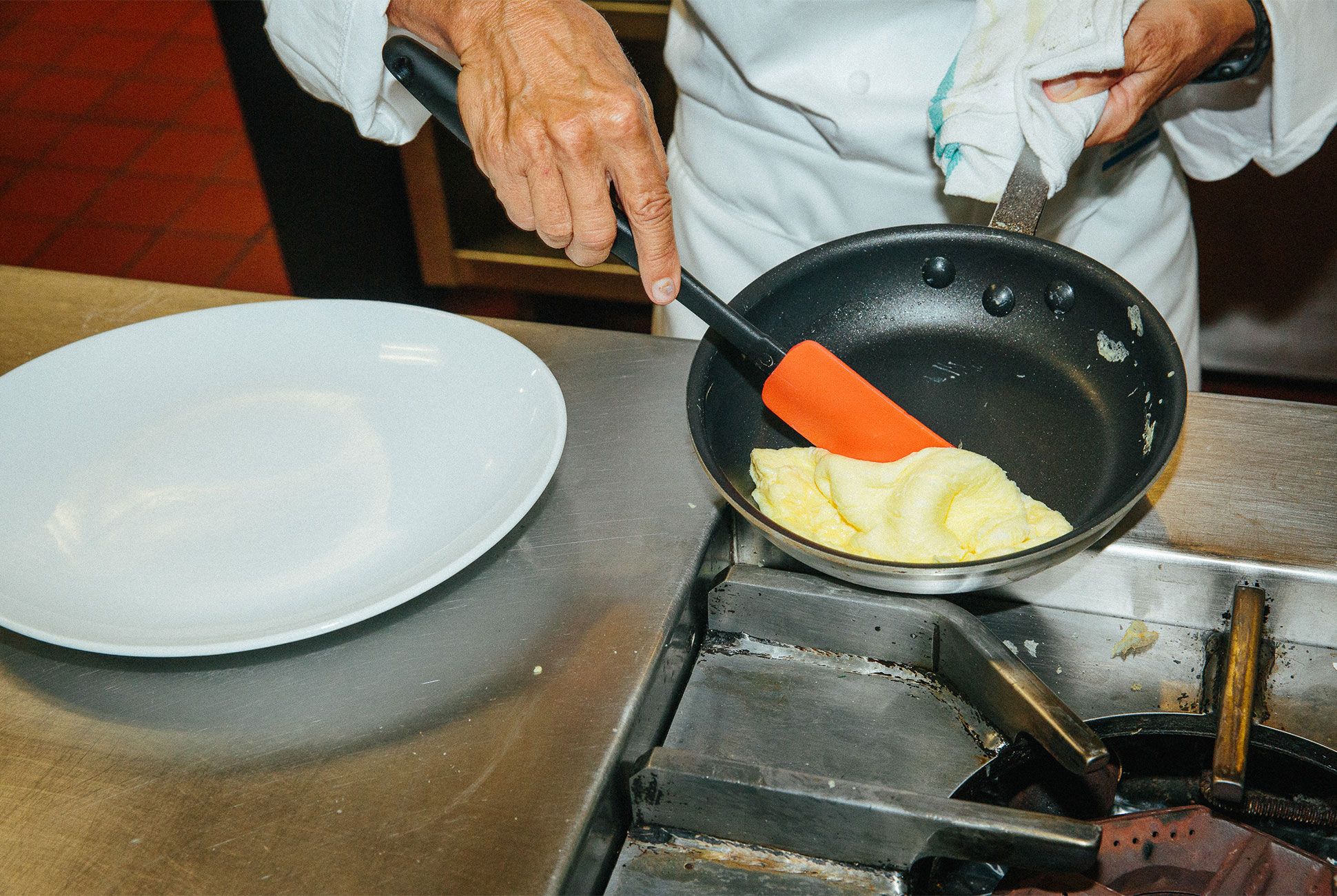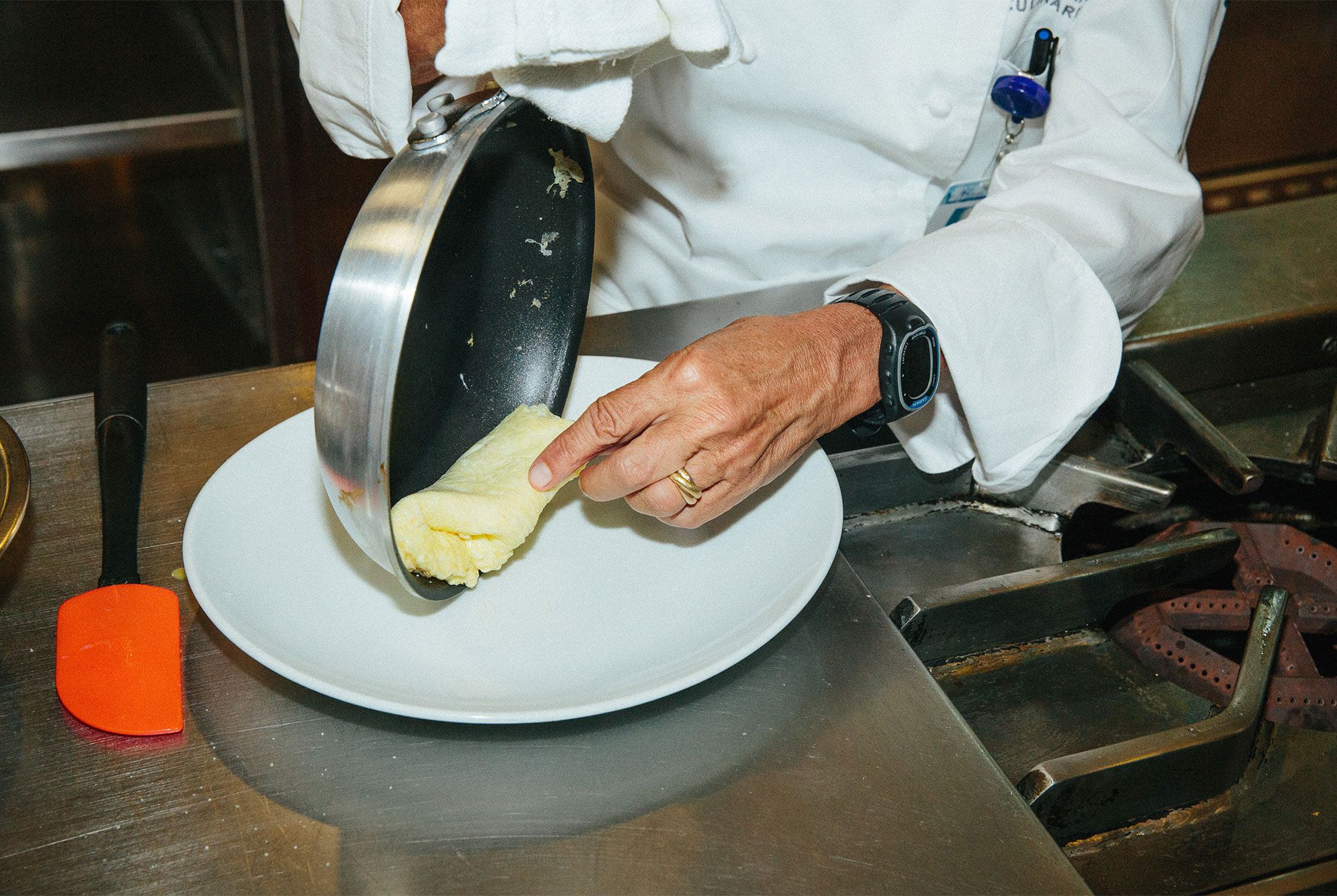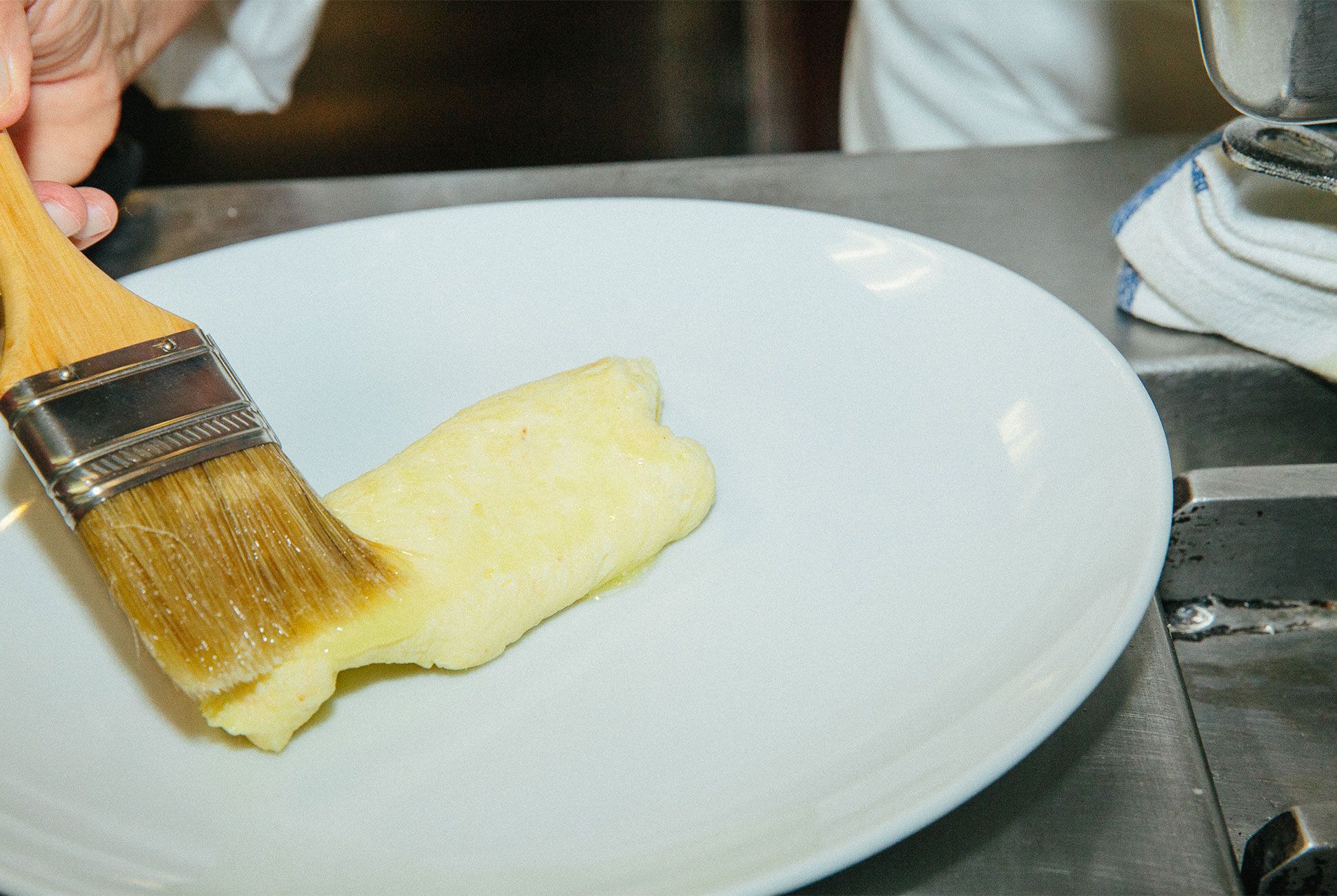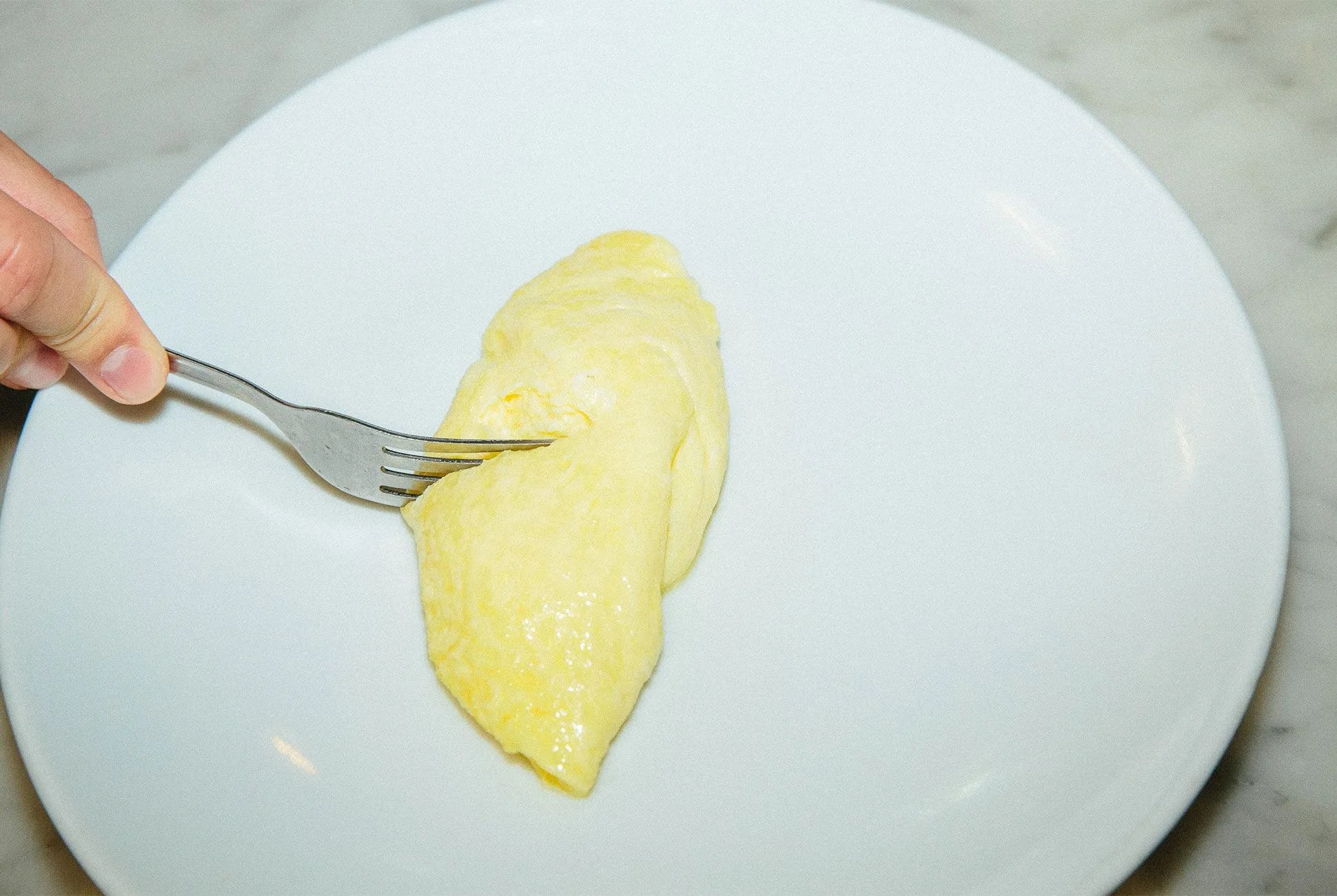However humble its composition, the French omelet has for years been considered the litmus test for many aspiring chefs. “One of our deans, André Soltner, who was the former chef at Lutèce, felt that if you could make a good French omelette, then you were going to gain entry into his kitchen,” says Candy Argondizza, the Vice President of Culinary and Pastry Arts at the International Culinary Center in New York City. “Eggs are really sensitive to heat,” she says. “Knowing how to regulate that heat, as to not overcook them, is really hard.”
Students at the ICC learn about the shape, color and texture of a well-made omelet, says Argondizza. It should be color free, wrinkle free and, above all, baveuse. That means that in contrast to a country omelet, which is browned, firm and wrinkly, the classic French omelet is rolled like a burrito and left half-cooked in the middle.
The average French omelet takes just over a minute to cook. Though the end result should be fairly consistent — a football-shaped torpedo that’s creamy in the center — the exact timing can vary from omelet to omelet. Success depends on the cook’s ability to read how the eggs are reacting in the skillet, and then interfere accordingly. Here’s how.
10 photos
Classic French Omelet
Makes one single-serve omelet
Ingredients:
2 eggs
1 teaspoon whole milk
1 teaspoon butter
Kosher salt
